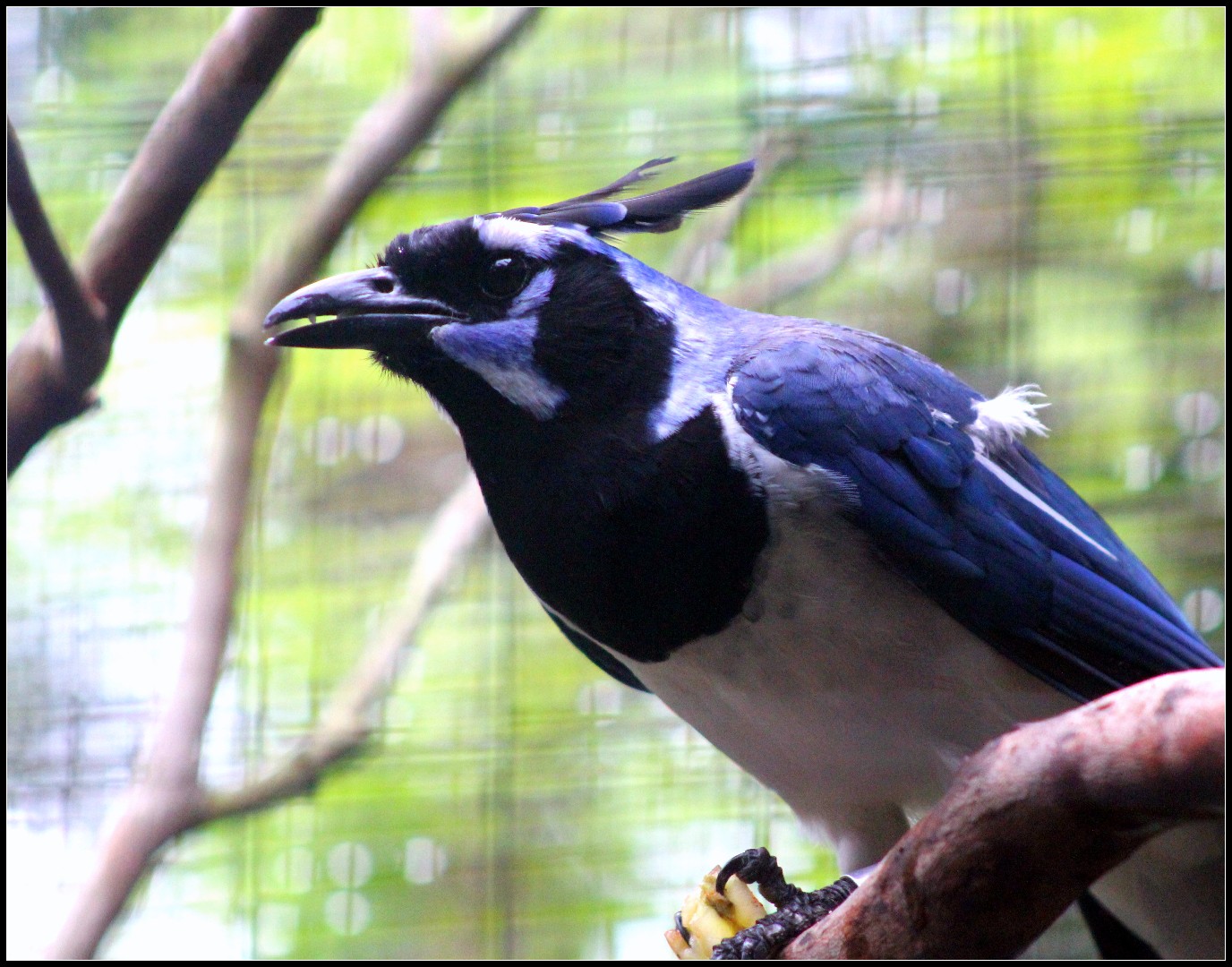Black-throated Magpie-jay
A species of Magpie-jays Scientific name : Calocitta colliei Genus : Magpie-jays
Black-throated Magpie-jay, A species of Magpie-jays
Botanical name: Calocitta colliei
Genus: Magpie-jays
Content
Description People often ask General Info
Description
This species is 58.5 to 76.5 cm (23 to 30 inches) long, more than half of which is the tail, and weight is 225-251 grams (8-9 oz.). Only a very few corvids, including the black-billed magpie, the red-billed blue magpie and the closely related white-throated magpie-jay, have a comparable tail length. The upperparts are blue with white tips to the tail feathers; the underparts are white. The bill, legs, head, and conspicuous crest are black except for a pale blue crescent over the eyes and a patch under the eye. In juveniles, the crest has a white tip and the patch below the eye is smaller and darker blue than in adults. In most birds, the throat and chest are also black, but some in the southern part of the range have various amounts of white there. The calls are varied, loud, raucous, sometimes parrot-like. 
Size
77 cm
Colors
Black
White
Blue
Nest Placement
Tree
Feeding Habits
Black-throated Magpie-jay are omnivorous, feeding on a varied diet including insects, seeds, and fruit. They display intelligent foraging behaviors, often hunting cooperatively. Unique adaptations like their long tail and strong beak aid in accessing food. Their diet versatility sets them apart.
Habitat
Black-throated Magpie-jay typically inhabit arid regions with bushy vegetation, including thorn forests and deciduous woodlands that offer open canopies. These birds are also found in riparian forests adjacent to bodies of water. Their habitats extend across various elevations, from sea level up to approximately 1800 meters. The broader geographical regions where black-throated Magpie-jay are found consist of subtropical areas with dry climate conditions, favoring ecosystems that provide adequate shelter and foraging opportunities.
Dite type
Omnivorous
People often ask
General Info
Feeding Habits
Bird food type
Bird Feeder Type

Platform
Behavior
The diet is the omnivorous one typical of the crow family. The nest is also typical of the family: a big cup of sticks lined with softer material. The female lays 3 to 7 whitish eggs with brown and gray spots. This species interbreeds with the white-throated magpie-jay in Jalisco and Colima, where intermediate birds are common. It has been considered a subspecies of the white-throated magpie-jay, Calocitta formosa colliei. 
Distribution Area
This species occurs in pairs or small groups in woodland, except for humid woodland, and partially open areas on the Pacific Slope of Mexico from southern Sonora south to Jalisco and northwestern Colima, for a total of 160,000 km. As of 1993 there was some evidence of a population decline. The species has become established in southern San Diego County (2013), especially in the Tijuana River Valley. The birds are presumably descendants of escapees from nearby Tijuana, Baja California, where the trade in birds is unregulated. 
Scientific Classification
Phylum
Chordates Class
Birds Order
Perching birds Family
Crows and jays Genus
Magpie-jays Species
Black-throated Magpie-jay 